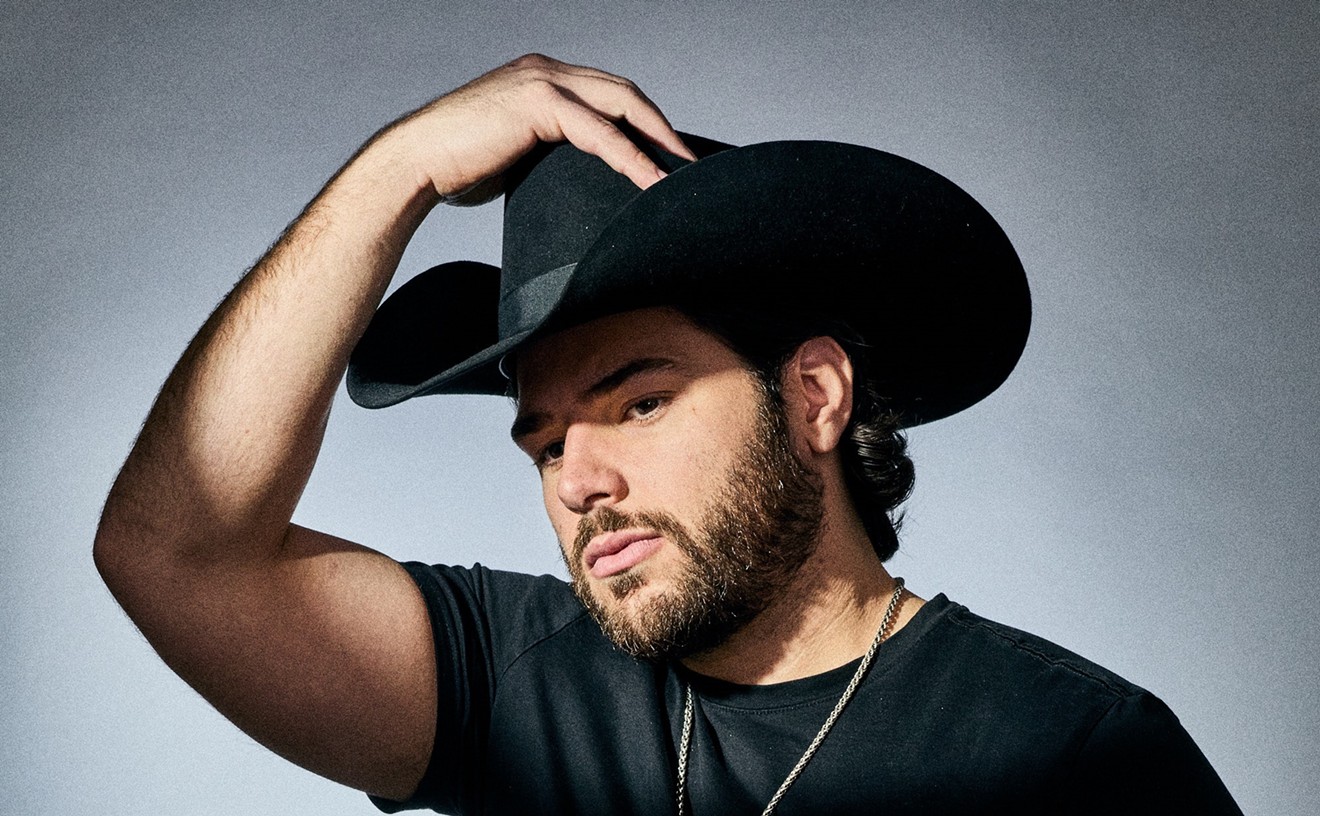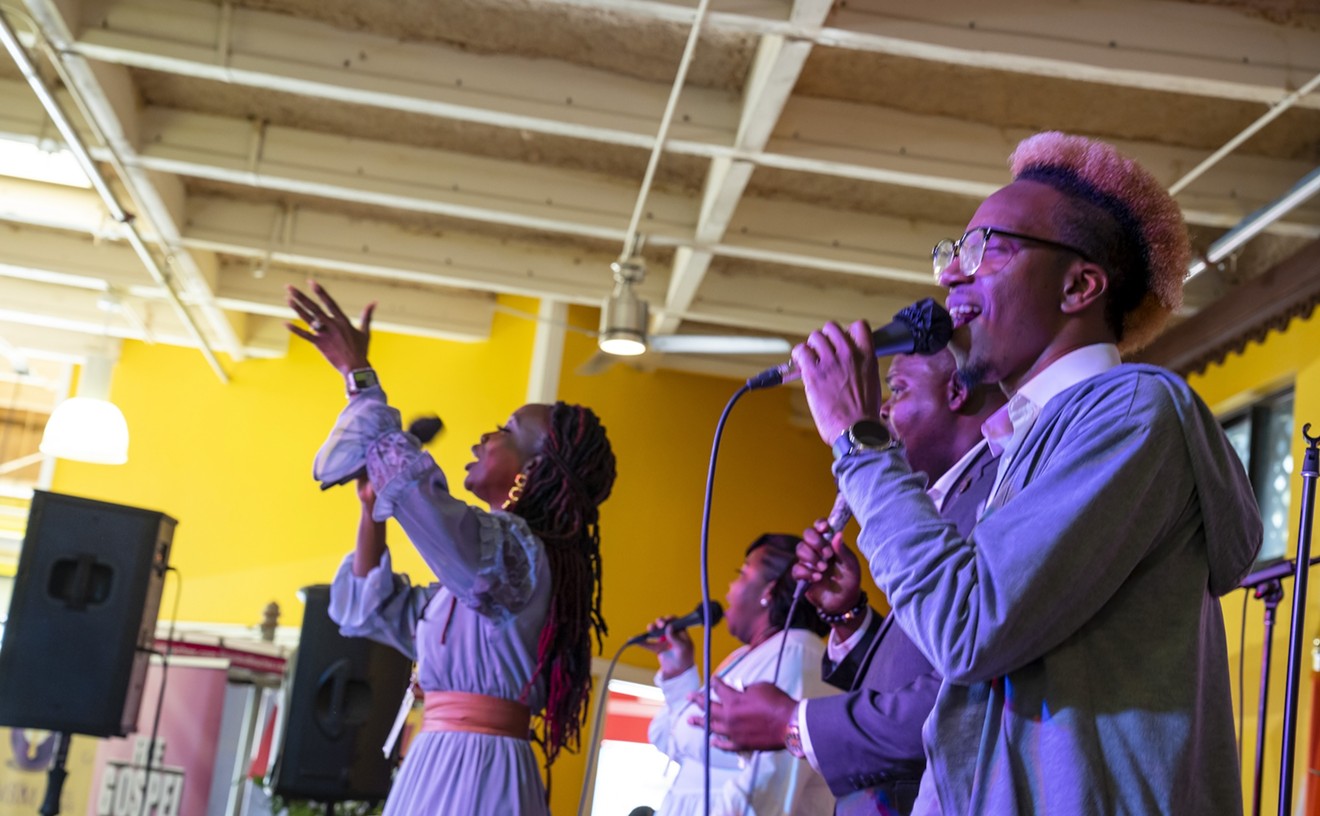“I gigged with every club in Miami,” Enrique recalls of those early years. “I never really thought I would end up a solo singer.” Thinking of himself as a percussionist and a songwriter first, the Nica put together a demo tape of his material and made the rounds of the major record labels. In the mid-Eighties he landed a regular gig playing percussion behind Cuban crooner Israel Kantor, taking the microphone once every show to sing the classic bolero “Como Fue?” (“How Did It Happen?”).
“That was my fifteen minutes of fame,” remembers the singer wryly. In 1997 New Times relayed Kantor's recollection that Enrique snatched the Cuban singer's shot at a recording contract when the dashing younger man captured the attention of A&R scouts initially interested in the veteran talent. “That's not what happened,” Enrique insists. “I was already in the process. I had already been signed by then.”
Getting signed did not stop the singer from playing just for fun. Even after his 1987 disc Amor de Medianoche (Love at Midnight) had him packing venues across the United States, the passionate percussionist beat the skins in clubs around town as an occasional favor for friends such as flautist Nestor Torres. When Café Nostalgia opened on SW Eighth Street in the late Nineties, the salsa celebrity with a dozen albums under his belt couldn't keep away from the club's legendary late-night jams. It was not unusual for Grupo Nostalgia's well-worn congas to take on a pink tint as blood seeped from his battered hands, but still Enrique kept playing.
“I cannot even tell you how I feel about playing,” admits the prince over dinner in Coconut Grove, before offering simply: “I miss playing. I never thought my career would get away from me.” An attempt to bring his career back within reach of his own calloused hands, Enrique produced Evolución in his home studio as the first release of his record label, Chazz, distributed by WEA Caribe. Taken from the nickname of Enrique's grandfather -- “the first person who sat down and taught me how to play songs on the guitar,” explains the dutiful grandson -- Chazz has given the successful salsero opportunities that he has never had before to protect the musical integrity of this project.
Which does not mean that as the head of his own label, Enrique is not interested in sales. “I want to get people who I see have a personality and can hold a place in the market,” he clarifies. By working with greater independence, Enrique hopes to create a distinctive sound. “I'm not interested in doing music for the sake of doing music,” he argues, “as if you were putting together the elements of a Diet Coke, just so you could sell another Diet Coke. I have my own personality and it's something I've been fighting for my entire career. The disc is a fusion of everything I've been, from salsa to pop to R&B.”
The elements in this fusion of styles are not in themselves unique, with nearly every act in tropical music today experimenting with the mingling of genres in an attempt to gain some crossover success. Enrique also makes the increasingly familiar claim, especially among Cuban island musicians, that his work is “commercial but still musical” and radio-friendly. Just what makes that alchemy happen? “If I knew that,” the eager producer says, “I would be very rich. I think the more you try to be commercial, the worse it gets. And the more that you try to be musical, the worse it gets. You need to just flow and be true to yourself.”
Being himself, for Enrique, means jamming with his friends. Joining him in his home studio were a number of socios from the old Nostalgia sessions. Omar Hernandez, director of Grupo Nostalgia and producer of that group's two CDs, plays bass here and shares much of the production and arrangement credits with Enrique. Nostalgia pianist Michel Fragoso also contributes to the arrangements and embroiders the melodies with a largely jazz-styled piano. Bandmate Alexis “Pututi” Arce lets loose on the timbales. Also heard here are friends of Nostalgia: Hammadi Bayard and Daniel Lopez.
Working with friends afforded Enrique certain luxuries. “Unless you're a ten-million-selling artist,” he points out, “budgets in Spanish music are really low, and you have to do miracles.” For the Nicaraguan singer, recording at home allowed him to expand time, keeping the musicians in his studio from this past June through the end of August, an exorbitant period compared with the standard salsa disc. “To be able to control time,” says Enrique, was the key. “Or in other words, don't control time and not let time be an issue because of budgets and all that.”
A leisurely pace allowed the musicians to re-create the collaborative magic of a spontaneous jam to a certain extent, and let the arrangements follow the percussion. “It's so fun,” smiles the producer, “because it was so unexpected. Imagine playing congas on a song that is not arranged. And as Omar plays bass, he's making the arrangement. And as Michel is playing piano, he is making the arrangement. I wouldn't trade that for anything in the world. The disc seems like a live show, but with a sound quality much better than playing a show.”
This form of organic arrangement pays off on Enrique's labor of love, helped out in no small part by the prodigious talent of the musicians and, for the Nostalgia crew, the live grind of their night jobs. Not surprisingly, given the high representation of Cubans who emigrated here in the Nineties, the aggressive percussion and horns of contemporary island music give an edge that even Enrique's most loving conga runs never approached in his more romantic phase. “Alma Rosa” (“Rose-Colored Soul”), in both the salsa and ballad forms bears a strong influence from Cuban neotroubadours. And the effect of a bunch of guys hanging out for months on end contributed some delightfully appropriate idiosyncrasies, such as the hula-keyboard flourish that opens the first single “Qué Se Yo?” (“What Do I Know?).
Comparisons with Cuban singer-songwriters such as Amaury Gutierrez and David Torrens, however, heighten the recording's shortcomings. If the instrumentation is inventive and impeccably executed, Enrique's success in keeping up as a vocalist is less consistent. The untrained singer has a smooth-as-silk midrange and a lovely falsetto, but getting from point A to point B sometimes can be a strain. In the ballad “Anonimo” (“Anonymous”), arranged with help by Raul del Sol, Enrique drowns himself in his lower depths, draining the power from his voice.
The lyrics throughout, however heartfelt, lack the clever poetic concepts typical not only of the neotroubadours but of the great boleros with which Enrique got his start. One example of metaphor run wild is “Planting a Flag,” in which the singer confesses to a litany of unrelated desires: “I want to be the pages of your newspaper/I want to be every heartbeat/ Maybe your language or your alphabet/To be the owner of your heart/I would go to war for you” -- and on and on. It's a pity, with Hernandez's funky bass line and Fragoso's slinky piano vamp, to have so little to hang on to here in verse.
Enrique, ironically, is at his weakest as a vocalist because he is pushing himself on this project in every way. He has not shied away from any risks. As a producer, arranger, and instrumentalist, his daring is to be applauded. “I sweated,” he complains lovingly of the effort. “I fought with it. I hated it. I felt all kinds of emotion. Some days we couldn't even look at each other, but in the end it was worth it. I wanted to protect my songs. Most of all I wanted to get my point across on what my music is supposed to be about. And we made it. We made it together.”










